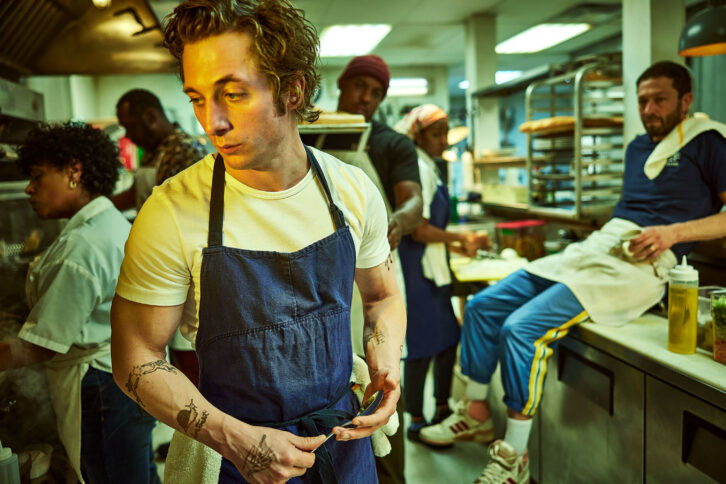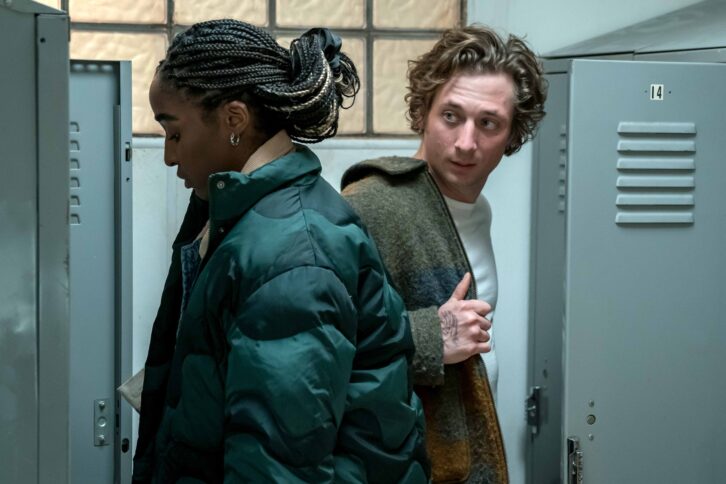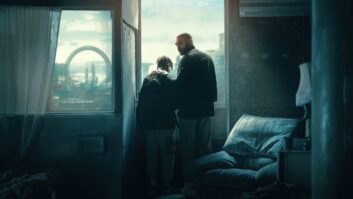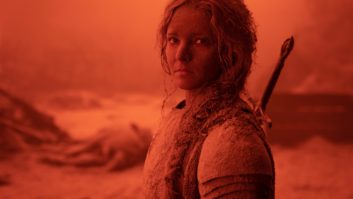Award-winning comedy/drama series The Bear is back on Disney Plus in the UK and Europe, and FX in the United States, for its second season.
The show follows the staff of the fast-paced The Original Beef sandwich shop in Chicago, and stars Jeremy Allen White, Ebon Moss-Bachrach and Ayo Edebiri.
Cinematographer Andrew Wehde helped create the look of the show using a camera and lens package from Panavision.
Wehde joined the project on episode two, picking up the fly-on-the-wall style that cinematographer Adam Newport-Berra established with the pilot.

Season one was shot in just 27 days – two days faster than scheduled – and Wehde says that was down to the production team designing the show’s stage as effectively as possible.
“We did an entire interactive lighting setup on the stage so that every single light in the restaurant — whether it was back of the kitchen, front of the kitchen, or the dining room — was a full RGB LED, controlled by our dimmer-board operator,” he explains.
“We never brought any lights onto the set, so we never had to wait for things, and there were no C-stands or movie lights in the way. It was all practical-based lighting. And outside of the stage, we had about 10 old-school 18K tungsten lights to give us the rich, warm light coming into the restaurant.”
The team also built stage so that the dolly could be used without a track or dance floor, which meant it was already ready for whatever was being shot.
The pilot was shot on a regular Mini, while Wehde opted to use a Mini LF, which he says helped create more of a cinematic feel. “I used a LUT based on the pilot, so the colour and contrast provided some connecting tissue,” he adds. “We introduced more movement starting in episode 2 — the camera never stopped moving, and we used the second camera in a way that kept that energy.”
He chose to use Panavision’s H series lenses, which Wehde says remind him of shooting on film. “Things don’t look optically too sharp,” he adds. “The skin looks dreamy and creamy, but the eyes have a pin sharpness, and you can see the eye light really well. I love how smooth the out-of-focus is; it falls away very softly, in a way that allows it to feel three-dimensional.
“The B camera lived on an expanded Panavision 11:1 Primo zoom. It never came off that camera. There was this chaotic, amazing kind of cinematography that was happening on the B camera at the same time the A camera was shooting the scene. Chris Dame, the B-cam operator, was always able to find interesting shots that were great for transitions and cutaways,” he continues. “The kitchen was basically a big horseshoe with an island in the middle, so if we were working on one side, Chris would work on the other and shoot through everything. And because his lens was an 11:1, he was out of the A-camera shot at all times.”

Wehde describes The Bear’s shoot as having a specific rhythm, which he attributes to his choice of lenses. “With Panavision glass, I’m free to choose and do whatever I want, because I know the look will hold. I do a lot of low-level lighting, which means that I need speed in that glass, and the H Series optically performs wide open just as well as it does a stop down. I’m constantly adjusting the iris through shots, always tweaking a stop up and a stop down, but I never see that iris change.
“These lenses have become an integral part of my work, how I light and move the camera. There’s a sense of trust I have in them, that I’m throwing everything and the kitchen sink at them and they’re just holding up and working. And at the end of the day, I think they’re happy to be doing it!”
Published with thanks to Panavision. The full interview with Andrew Wehde is available here.







